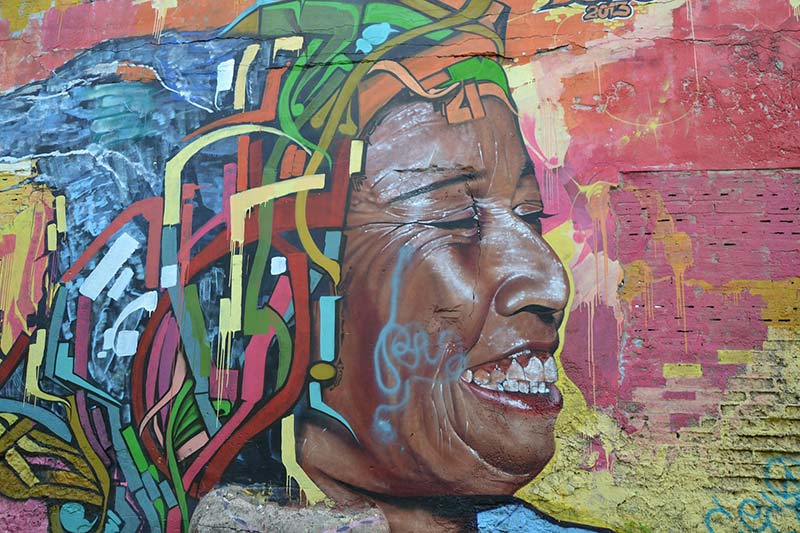Demand-responsive transport for vulnerable users requires a great deal of care from the operator and its drivers, but when done well it makes a real difference to people’s everyday lives, as with Little Bus
Demand responsive transport (DRT) is a specialised part of the minibus world. It requires an operator and drivers that are able not only to deal with routes that change on a daily basis, but who can also handle the task of carrying passengers who are often vulnerable.
D&G Little Bus is lucky that it has a team of staff that takes these needs in their stride. Its 11 accessible minibuses serve a Cheshire East Council DRT contract, and they operate from the same base in Crewe that houses D&G’s fleet of larger buses.
In July 2018 D&G will have had the Cheshire East DRT contract for five years, and it will be retendered at that point.
Prior to it going to D&G, the work was divided between two smaller operators. Since it moved, passenger demand has grown, says Senior Traffic Office Supervisor Paula Cheshire, who has responsibility for the DRT service.
“I was a driver on Little Bus before I came off the road, and I know that the job is as easy or as hard as you want to make it,” she explains.
“Drivers are the backbone of Little Bus. They have a lot to do apart from just driving, but they go above and beyond. They go to passengers’ front doors and help them on and off the minibus and they also carry users’ shopping for them.”
It might be surprising to hear that, in a world where staff swap employers regularly, Little Bus enjoys a stable workforce.
Almost all of the drivers that were TUPE’d across from the previous operators remain with D&G, and a handful of others have joined as the service has grown. The 11 minibuses meet a peak requirement of nine, so what is the secret of doing this work well?
Staying organised
It starts behind the scenes, and Paula is assisted by Sally George, who handles bookings. Little Bus is for people who are unable to use conventional buses, and all of its 2,000 users are registered.
Like everything else operationally with Little Bus, registration administration and the inputting of data into the booking system is handled entirely by D&G, although it has regular meetings with Cheshire East Council.
After they register, users are sent a pamphlet with information about how to use Little Bus. They can then book journeys via phone lines that are open between 0930-1230hrs Monday to Friday; Little Bus runs between 0930-1600hrs on the same days.
Naturally, users must be Cheshire East residents, and Little Bus covers the whole of the authority’s area from Crewe in the south to Knutsford and Macclesfield in the north.
That’s quite a task with nine vehicles in service, especially as Cheshire East’s landscape varies from urban Crewe where short-distance demand can be high, to rural areas surrounding Macclesfield, where demand is lower but distances between calling points are much longer.
“Passengers book at least one day prior to travel, but we have a number of regular users who make the same journey every week. In those cases, they don’t need to call us and we keep serving them until they tell us that we are no longer required,” says Paula.
As if by magic…
To maximise efficiency, bookings in the more remote areas are grouped together on a day-by-day basis. As an example, villages surrounding Macclesfield are typically served once or twice per week depending on the level of demand.
At registration, users are allocated geocodes based on their location. Ad-hoc journeys are accommodated as effectively as possible via a mix of computerised and manual scheduling.
It is often possible to move bookings slightly to accommodate other passengers, but when the scheduling software draws a blank the tried-and-tested way of doing things by hand is utilised.
“We have a space for unallocated passengers, and after the phone lines for the following day’s bookings close, we go through them manually and find a place for them,” adds Paula.
Part of the scheduling is an allowance for infirm passengers. When the user is in a wheelchair, 15 minutes is given for them to get on or off, and boarding and alighting times are varied for other passengers depending on driver feedback; when it is received, requirements are inputted onto the passenger’s record and they form part of the schedule from then on.
The driving force
The nature of Little Bus’ passengers means that routes and stopping points can change at short notice. Alterations are communicated via text message. Each driver usually covers the same area every day, although a handful may ‘float’ to cover holidays and sickness.
“Keeping drivers in the same areas is something that we feel strongly about, because passengers get used to seeing the same person,” says Paula.
“We sometimes have to change drivers for operational reasons, but continuity is best because we are often dealing with older people who may have Alzheimer’s or dementia. It is very important that they see a familiar face at the door when the minibus comes to pick them up.”
Next of kin details for all users are held on record. While most passengers are of an older demographic, Little Bus also carries some younger disabled users, and each bus may be used by up to 40 travellers on a busy day.
Utilising the assets
Slick scheduling and grouping passengers geographically is all done in the name of working minibuses as hard yet as efficiently as possible, and there is a variety of vehicles in the fleet including coachbuilt models and conversions.
“We have a variety of internal layouts; the maximum is 15 seats but others have less than that where seats have been removed to create space for wheelchair users,” says Paula.
As Little Bus shares a depot and maintenance facilities with D&G’s 30-strong conventional bus fleet, it is a simple task for engineers to alter seating arrangements to suit the following day’s requirements.
To make this as simple a task as possible, tracking rails are cleaned daily, and while considerable dead mileage could be saved by parking minibuses at outstations in the towns that they serve, all are kept at Crewe overnight to ensure they are available for the following day’s service
A demonstrator with a low-floor area has been evaluated by Little Bus, but drivers suggested that they prefer flat-floor models. That’s not just for layout flexibility, says Paula.

“Drivers prefer to secure passengers in the vehicle using straps rather than using a backrest and the chair’s brakes in a low-floor area because they know then that the user is not going to move.
Drivers have been trained how to tie down wheelchairs properly, and our scheduling allows them time to do so.
“Drivers were TUPE’d across with the contract and they were familiar with DRT work, but we were all given comprehensive training in all aspects of the operation by D&G.
“That included safe stowage of passengers’ bags; an example used during the training was on another operator’s service when a can of Coke fell out of the overhead racks and injured someone.”
That’s part of D&G’s commitment to making sure that things are done correctly on Little Bus, as well they should be when the social importance of the service is considered.
“Our passengers, and particularly those who are wheelchair users, often say that DRT is their lifeline. If it didn’t operate, they would be unable to leave their house. That’s how important it is,” adds Paula.
“Five days a week, we send out nine vehicles to cover all of Cheshire East, and we work very hard to accommodate every user’s request. It’s not always an exact science, but the nature of the service and the nature of our passengers mean that they are all carried, even if it is very occasionally on an alternative day.”
Passenger volumes have gone in the right direction since D&G took on the Little Bus DRT work, and it increased the number of vehicles in service every day from eight to nine.
“We went to the council and told it that an additional minibus was needed to meet growing demand. It looked at the figures and it agreed with us.”
Funding for public transport in Cheshire East is currently under review. But Little Bus serves a valuable need for many of the area’s mobility-restricted residents, and it does so efficiently and with a team of committed drivers and supervisors. The increase in passenger numbers is testament to that.


























